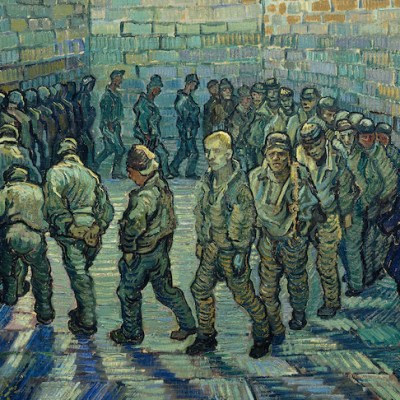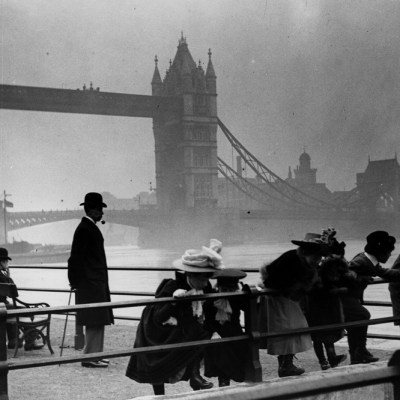
 ‘Four things to see’ is sponsored by Bloomberg Connects, the free arts and culture app. Bloomberg Connects lets you access museums, galleries and cultural spaces around the world on demand. Download the app here to access digital guides and explore a variety of content.
‘Four things to see’ is sponsored by Bloomberg Connects, the free arts and culture app. Bloomberg Connects lets you access museums, galleries and cultural spaces around the world on demand. Download the app here to access digital guides and explore a variety of content.
Each week we bring you four of the most interesting objects from the world’s museums, galleries and art institutions, hand-picked to mark significant moments in the calendar.
Two major events in infrastructure history are connected across 21 years – bridged, you might say – by today’s date, 24 May. On one side is the opening of Westminster Bridge in its current form in 1862 (though a bridge had existed there in some form since the mid 18th century). On the other is the opening of Brooklyn Bridge in 1883, the longest suspension bridge in the world at the time.
Marvels of engineering that seem to embody resilience, transitions and connections across time and cultures, bridges have long been a captivating subject in art, perhaps most famously in Monet’s series depicting the Japanese-style bridge over the water lilies in his garden in Giverny. Here we commemorate the anniversaries of the unveiling of two iconic structures by looking at four items that capture both the aesthetic and the utilitarian appeal of bridges.
The Brooklyn Bridge: Variation on an Old Theme (1939), Joseph Stella. Whitney Museum of American Art, New York; © Estate of Joseph Stella
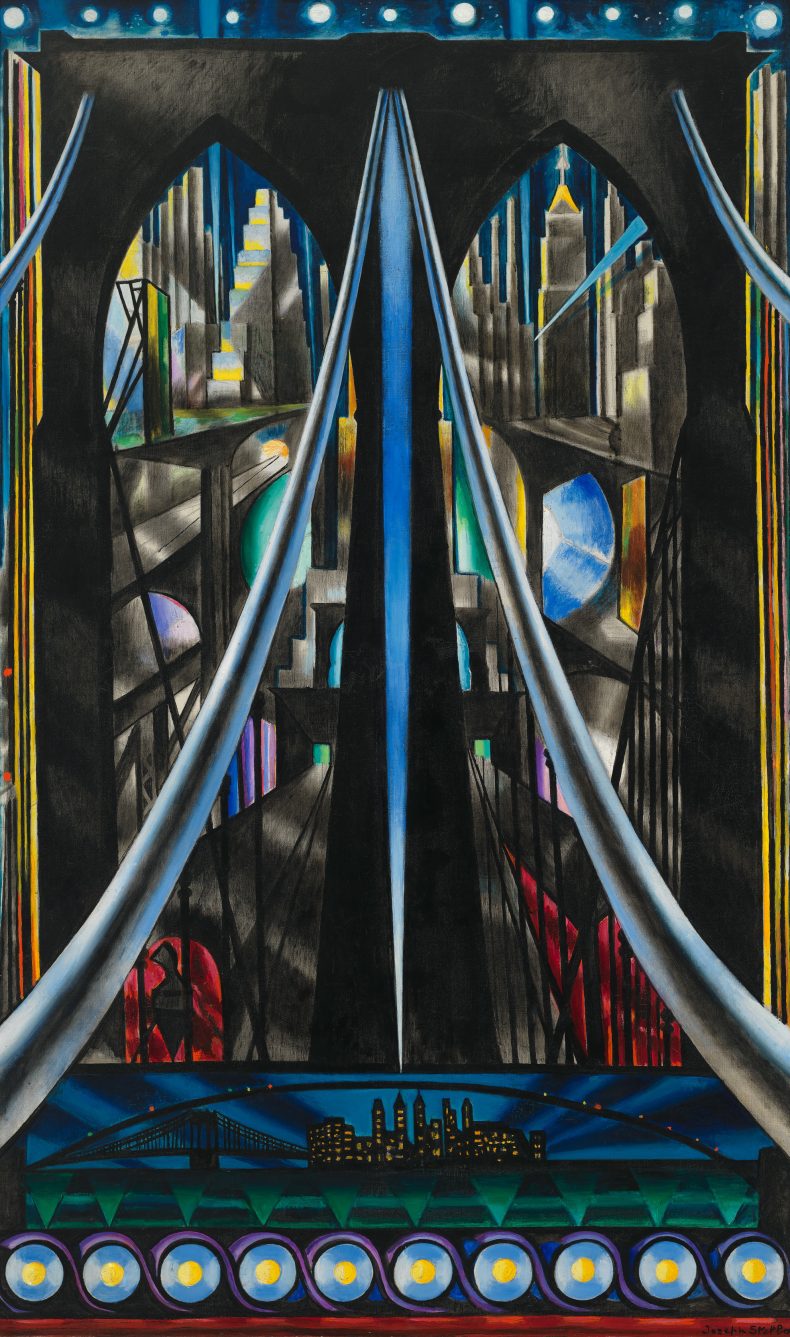
The Brooklyn Bridge: Variation on an Old Theme (1939), Joseph Stella
Whitney Museum of American Art, New York
Joseph Stella’s renowned rendition of the Brooklyn Bridge captures the grandeur and dynamism of the structure and of the city at large. Stella moved to New York when he was 19 years old and was entranced by the city; he went on to depict the industrial drama of the Brooklyn Bridge repeatedly throughout his career. Find out more on the Bloomberg Connects app by clicking here on your mobile device, or by scanning the QR code at the bottom of this page.
Fujisawa, Station 6 (19th century), Utagawa Hiroshige. Blickling Hall, Norfolk. © National Trust
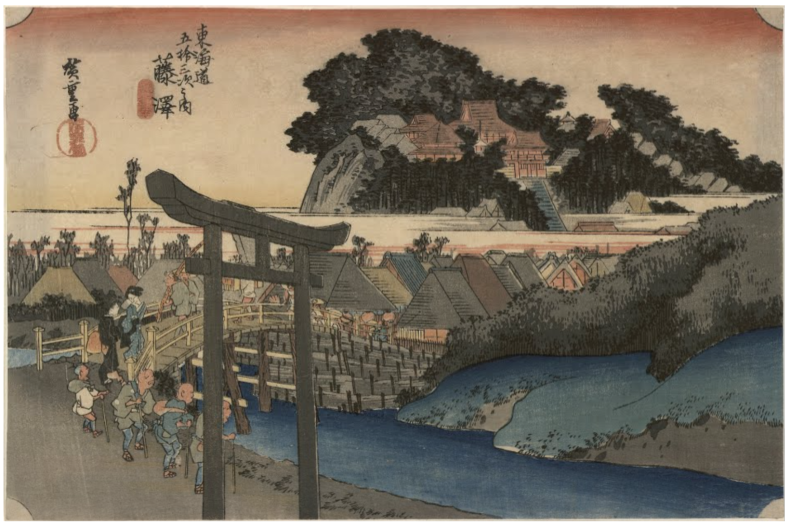
Fujisawa, Station 6 (19th century), Utagawa Hiroshige
Blickling Hall, Norfolk
Hiroshige’s thoughtfully composed lithograph depicts a serene moment along Japan’s Tokaido highway. This print, part of the series The Fifty-Three Stations of the Tokaido, delicately portrays a group of blind men crossing a bridge, offering a glimpse into daily life in the town of Fujisawa in Kanagawa prefecture. Click here to learn more.
View of the Sunk Pier and Arches at Westminster Bridge (1748), engraved by Parr from an original design by William Halfpenny, London. Science Museum, London. © the Board of Trustees of the Science Museum
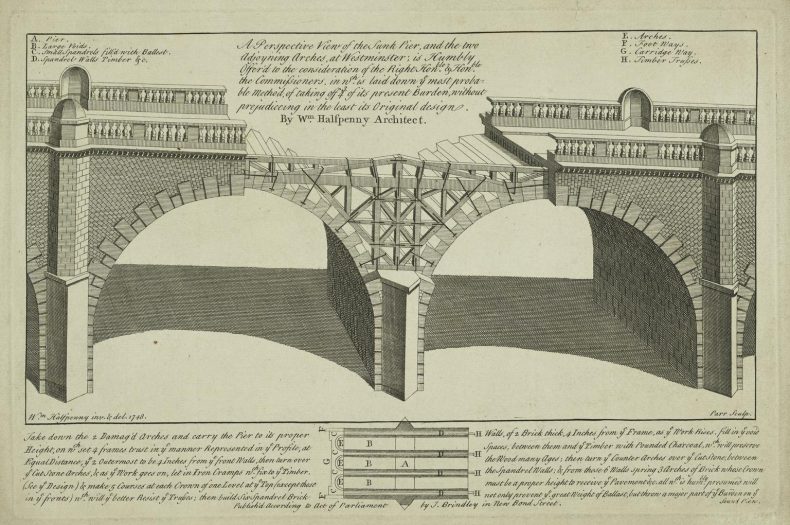
View of the Sunk Pier and Arches at Westminster Bridge (1748), engraved by Parr after William Halfpenny
Science Museum, London
This engraving provides insight into an earlier iteration of Westminster Bridge and the challenges of its construction. Designed by the Swiss engineer Charles Labelye, the bridge faced criticism and structural problems, but became a celebrated ornament of the city upon completion in 1750. By the mid 19th century, the bridge was badly subsiding, and the engineer Thomas Page was called upon to design a replacement. The bridge based on his plans still stands today. Click here to find out more.
Taushubetsu Bridge, Nukabira, Hokkaido, Japan (2008), Michael Kenna. Borusan Contemporary, Istanbul. © the artist

Taushubetsu Bridge, Nukabira, Hokkaido, Japan (2008), Michael Kenna
Borusan Contemporary, Istanbul
Michael Kenna’s black-and-white photograph depicts the ephemeral, quiet beauty of a crumbling railway bridge in Hokkaido, partially submerged beneath the surface of a reservoir. Kenna captures the bridge’s haunting presence, reflecting on both human intervention and the eerie absence of humanity amid natural landscapes. Click here to find out more.
![]() ‘Four things to see’ is sponsored by Bloomberg Connects, the free arts and culture app. Bloomberg Connects lets you access museums, galleries and cultural spaces around the world on demand. Download the app here to access digital guides and explore a variety of content or scan the QR code.
‘Four things to see’ is sponsored by Bloomberg Connects, the free arts and culture app. Bloomberg Connects lets you access museums, galleries and cultural spaces around the world on demand. Download the app here to access digital guides and explore a variety of content or scan the QR code.


